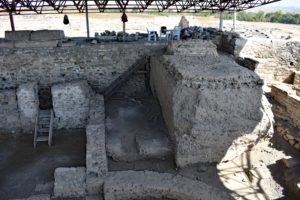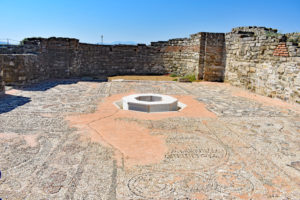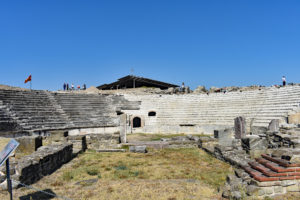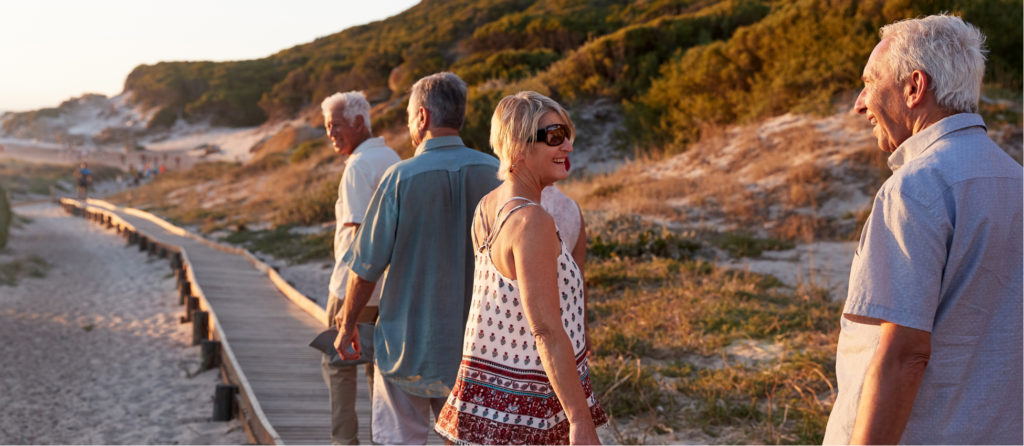We visited the ancient city of “Stobi”:http://www.stobi.mk/Default.aspx?page=155, on our journey between Lake Ohrid in North Macedonia and Korce in “Albania”:https://www.silvertraveladvisor.com/blog/destination-features-europe-albania/albania. The city was founded at the confluence of the rivers Crna and Vardar at the crossing point of the Roman roads, Via Egnatia, Axia and Diagonale. It was first discovered in 1861, but excavation didn’t begin until 1924 and today, only a small fraction of the city has been uncovered. However, it is considered to be the most famous archaeological site in North Macedonia.
Arriving at the ticket office at 11am, the only guide had just set off with a group and we were given the option of joining them or waiting around 45 minutes for her to return. Whilst we were deliberating, another option was presented: downloading an audio guide onto my phone. With the help of the two girls, we unlocked free Wi-Fi, downloaded the App, set it to English and had a crash course in using it.
A site map had numbered stations related to display boards and when we clicked on, a short description of each site lasted between 30 seconds and two and a half minutes. Although the various parts of the site were sequentially numbered, to avoid the group, we took a different route.
We started with the amphitheatre, where men were working on reconstructing the remaining seats. There are three other theatres in Macedonia: (1) Heraclea Linkestis (which we visited in the afternoon), (2) Ohrid, which we’d also visited, and (3) Skupi, the only one we missed. However, with a capacity of over 7,000, Stobi was the largest and was one of the most impressive buildings in the city.
There were at least five basilica, including a synagogue which we’d read about the day before in Skopje’s “Jewish Holocaust Museum”:https://www.silvertraveladvisor.com/review/attraction/203391-review-sightseeing-in-skopje-part-1-the-old-town, and the Episcopal Palace, where the mosaics were been recreated by yet more workmen.
One of the final sites was excavated in 1934, when it was originally thought to be the house of a craftsmen due to the discovery of shells. Later in the 1990s, it was then thought that shells were simply the remains of a fish supper!
There was a long walk, in temperatures of 30 degrees, to the synagogue mosaics, but having reached the spot, we couldn’t find them. I then got a boot full when I inadvertently stepped off the path into a sand pit. We later discovered at Heraclea, that mosaics are covered with sand to protect them from extremes of temperature in winter or simply to preserve them if they are in poor condition: I then realised I’d probably been walking on them!
Back at the centre an hour later, we visited the loos, the small gift shop and set off on our way.
Note for visitors: this is an exposed site and it’s probably best to carry water.










